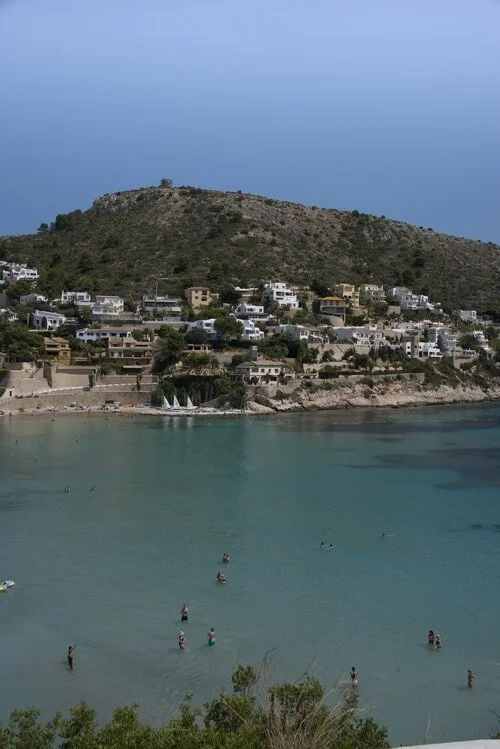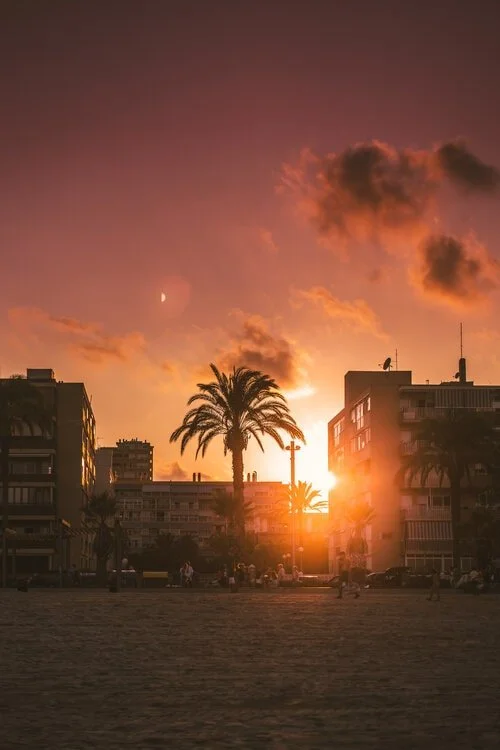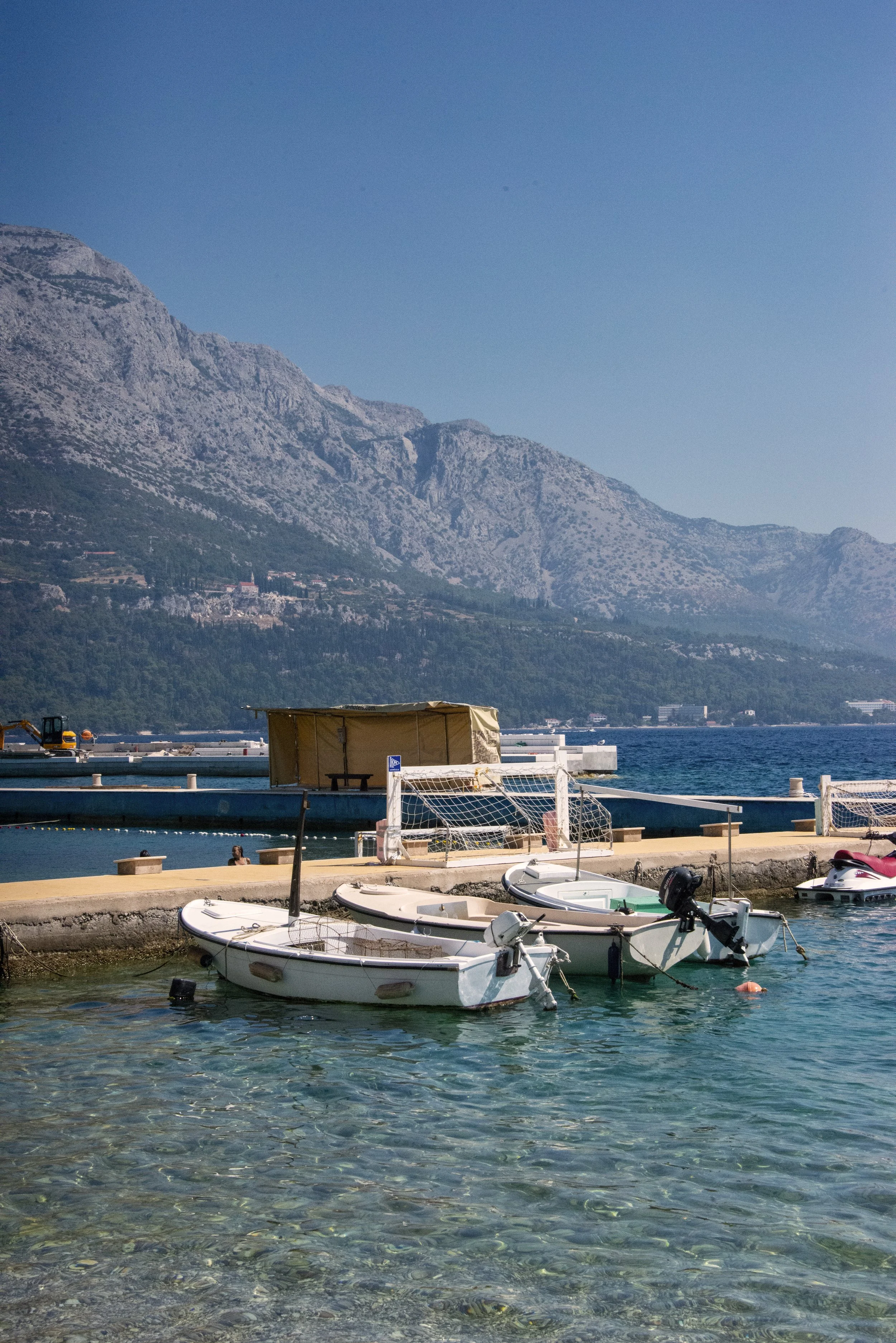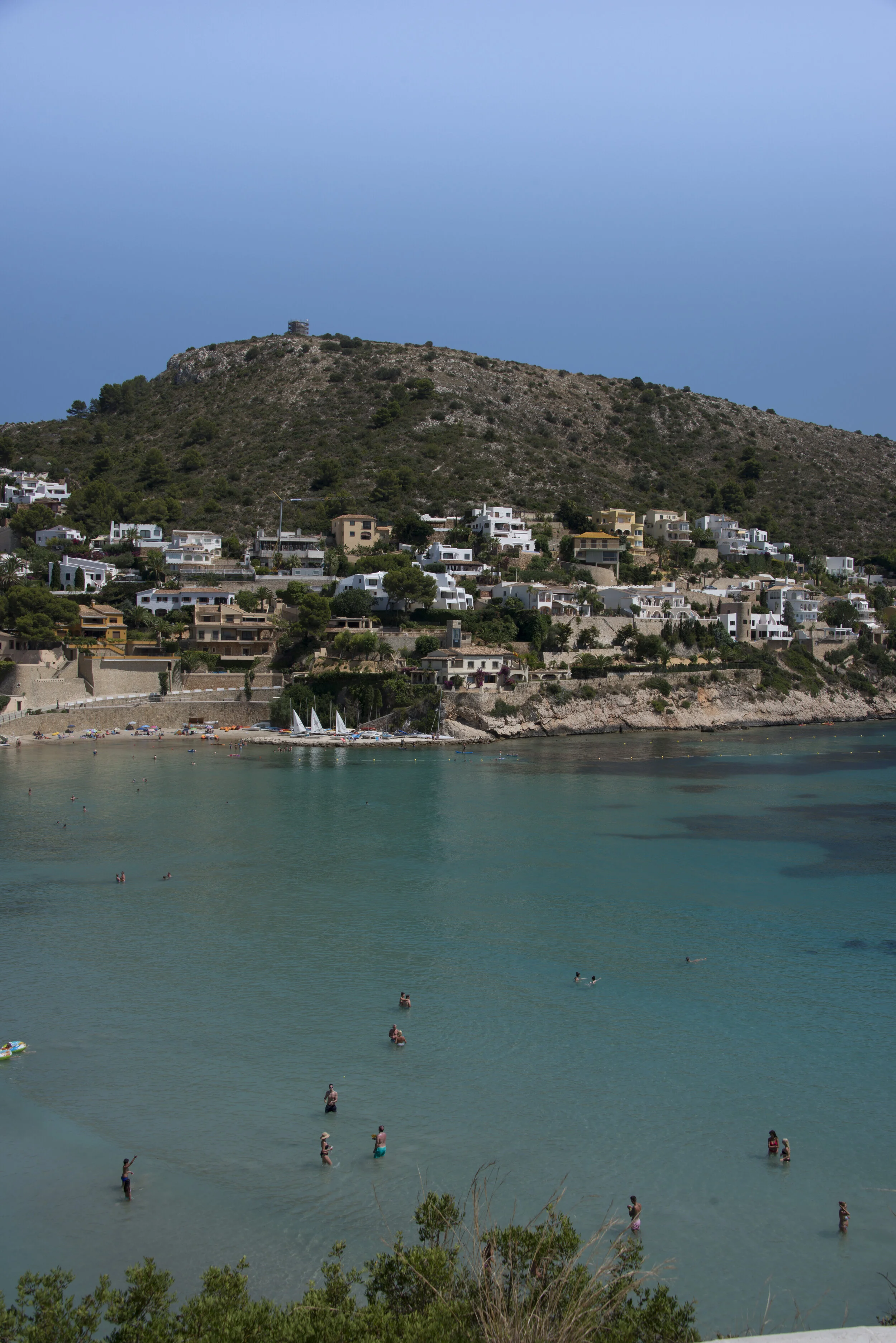How to Plan a Trip to Alicante
Lapping Spain’s south-eastern coast, Alicante embraces its rich, medieval history, colourful architecture and divine cuisine, with an abundance of some of the Mediterranean's best beaches. Here’s How to Plan a Trip to Alicante.
The Costa Blanca is brimming with an eclectic array of hidden coves, turquoise waters, and blissful bays pouring onto the golden sand.
It’s no wonder that Alicante reels in tourists from around the globe year after year.
Spanning over 244km of coastline, there’s plenty to satisfy beach bums, snorkelers, surfers, and sailors alike.
8-Step Planning Checklist
Before you can take the full plunge, work your way through these eight simple steps. Whether you’re planning for the summer, spring, winter or autumn, planning a trip to Alicante couldn’t be more accessible!
Follow this checklist to begin the adventure of a lifetime!
Step 1: Determine the Destination Country & Cities
Step 2: Decide on the Trip Duration
Step 3: Figure out When is the Best Time to Visit
Step 4: Create a Travel Budget
Step 5: Book Your Accommodation (preferably 3 to 4 months in advance)
Step 6: Research & Organise Transport & Activities
Step 7: Get Your Documents in Order (Visa, Passport & Travel Insurance)
Step 8: Nail the Process with this Packing List
Best Time to Visit Alicante
Alicante embraces a predominately Mediterranean climate, with over 300 days of sunshine yearly, making it a year-round destination. June through to September marks the peak season, with majorly hot and dry weather.
In particular, June and August draw in international crowds hoping to get a glimpse of the Mediterranean in all its glory. If you’re a beach bum and want more beach space, I’d aim for either June or September.
If you’re looking to ditch the hordes of tourists altogether, I’d recommend planning for the springtime, late September – November, or autumn, March to May. The springtime also offers the opportunity to explore the countryside, where an abundance of almond trees paints the scene, bringing life to the landscape as they blossom.
During the winter season, December to February, Alicante’s weather generally tends to be relatively mild, with a fresh breeze. Temperatures can fluctuate, so pack a couple of warmer layers.
Language
Alicante is home to two official languages, Spanish (Castellano) and Valencian (Valenciano). Spanish is the predominant language widely spoken throughout Spain, and Valencian is a dialect of Catalan. Quite often you’ll often find buildings, landmarks, and street signs referred to in each of the two languages. English is also widely spoken in the major tourist areas, as well as Italian, German, and French.
Best Things to Do in Alicante
Every year, tourists and Spaniards alike hoard to Alicante to get a taste of the coastal, Mediterranean lifestyle. From the island of Tabarca, once roamed by pirates, to the centuries-old, impressive Santa Barbara Castle, there’s a remarkable array of historical sites and blissful beaches for you to discover.
With so much to do, it can feel overwhelming trying to make sure you tick everything off your bucket list.
To help make your trip a bit easier, here are some of the best things to do in Alicante, including top natural attractions, activities, beaches and day trips.
Serra Grossa
Perched at an elevation of 161m above sea level, the Serra Grossa is a popular destination for both sunset and fitness enthusiasts. However, it also boasts a significant historical significance in the city. Within the rock are more than 1km of underground tunnels, massive vaults, and lengthy corridors.
If you love to break a sweat, the Serra Grossa is the ideal location for running, cycling, or in my case, power-walking. There is a simple route to the summit, with a range of paths you could elect for a detour.
Honestly, I think that this is a spot you can’t miss. Whether you’re setting out for a sunrise or sunset mission, I assure you that the sweeping vistas will not disappoint. This is one of Alicante’s best-kept secrets.
This was undoubtedly one of my favourite things we did on our road trip through Alicante. The soaring Serra Grossa mountain boasts the best panoramic views of the seaside city and the glorious Mediterranean.
Located towards the city's northwest, the Serra Grossa segregates the bustling urban district with the coastal towns of Albufera and Cabo de la Huerta.
Santa Barbara Castle
Towering above the city’s limits, the 19th-century Santa Barbara Castle is juxtaposed amidst an exciting ensemble of modern buildings. If you’re reasonably fit and up for a challenge, hike up to the top of the hill.
Sitting 166m above sea level, the panoramic views from the castle's peak are, as you can imagine: downright impressive. The steep incline of the walk makes it all worth it, and the views will undoubtedly reward your efforts. For aversive hikers, you can ditch the hard part and drive up to the entrance of the Santa Barbara Castle.
Mount Benacantil
Mount Benacantil is the iconic, characteristic image Alicante is known for. You’re guaranteed to see it on almost every postcard, refrigerator magnet, and souvenir.
The mountain dominates the urbanised region of Alicante, with the Santa Barbara Castle sitting atop. Immerse yourself in a more natural experience as you climb Mount Benacantil, and explore the pine and eucalyptus trees spread throughout the hill. If you’re seeking some adventure amidst your beach trips, this is the perfect little trek to suit.
Old Town Alicante
Ever since I first travelled to Rome in 2013, I’ve always believed that the best way to see the more authentic side of a city is to walk it. There’s nothing better than getting lost in the ancient back streets and alleyways of a new destination, and Alicante’s Old Town is no exception.
As you navigate the winding streets, you’ll be blown away by the colourful little homes bursting with vibrant flowers, such as the bougainvillea. Explore the slopes and experience the hidden gems you’ll only find on foot, then reward yourself at a local tapas bar with a bubbly cava or vermut rojo.
Basilica Santa Maria
Lain in the lively Alicante Old Town, the Basilica Santa Maria sits on the remains of an ancient mosque. Built between the 14th and 16th centuries, the Basilica Santa Maria features Valencian Gothic style architecture, with a Baroque entry that’s still well intact.
The basilica is open from 11 am to 12 pm and 7 pm to 8 pm. As the oldest religious church in Alicante, you should expect big crowds, especially if you plan on visiting during the day.
Explanada de España
Constructed with more than 6.5 million marble tiles, Alicante’s Explanada de Espana is the main boulevard in the city. The city’s colours protrude from the esplanade, with blue, white and red, adding a touch of colour and charm to the area. Lined with soaring palm trees, the site offers the perfect opportunity to enjoy a stroll or take a seat and relax.
There are also many restaurants, bars, and terraces spanning the Explanada de Espana, but just keep in mind that if you choose to eat at one of these places, it will come at a higher price tag.
Parque El Palmeral
Located in the south of Alicante, the palm-lined Parque El Palmeral is an urban space offering many natural attractions, with a waterfall, walking trails, boating opportunities, and even a BMX track.
Boasting a diverse array of over 7000 palm trees, the Parque El Palmeral is the perfect spot to come and enjoy a picnic amongst the greenery.
Pack yourself a bocadillo, a good book, and you can’t go wrong with a few cervezas for the ultimate picnic by the lake. The park is ideally best visited during the early morning or late afternoon.
Alicante Cathedral
The Alicante Cathedral, or the San Nicolas de Bari Cathedral, is in the city's heart.
Perched in front of Plaza del Abad Penalva, the cathedral is famed for its’ 45m high cobalt dome that soars above the streets of local life. The interior of the Alicante Cathedral is quite impressive too. I’d recommend heading up the staircase to catch a different perspective on the details.
Baños de la Reina
The Queen’s Baths, locally known as the Baños de la Reina or La Illeta dels Banyets, can be found in El Campello. Once a Roman fishing farm in ancient times, the modern-day ‘island’ juts out from the coastline.
The Queen’s Baths offer an exciting slice of the region’s history and a specifically designed snorkelling route to investigate your way through the water. This is a scenic experience that’s best enjoyed in the early mornings!
Best Museums in Alicante
Alicante is home to a rich culture and history, as well as many museums and art exhibition centres. Boasting a collection of unique artefacts, you’ll find everything from ceramics, fine arts, and archaeological finds. Be sure not to miss the following museums and exhibits:
Archaeological Museum of Alicante
MACA Contemporary Art Museum of Alicante
Gravina Museum of Fine Arts MUBAG
Museo de la Asegurada (MACA)
Archivo Municipal
Museo Taurino
Museum University of Alicante
Best Markets in Alicante
Most of Alicante’s villages and towns host a weekly market offering goods of some sort, from fresh, local produce to leather shoes and bags; there is almost always something going on. Head down to one of the markets to score cheaper prices, fresh veggies, and coveted finds.
Mercado Central de Alicante
Torrevieja Market
Jalon Market
Benidorm Market
Denia Market
Orihuela Market
El Verger Antique Market
Best Beaches in Alicante
Within the heart of the city, there are a ton of beaches to explore.
Whether you’re searching for the perfect spot to bury your butt into the sand, get a taste of the nightlife, or relax with no one else around, I can assure you that this city has everything.
Check out this comprehensive post on Alicante’s Best Beaches.
If you only have time to visit one beach in Alicante, make it El Portet in Moraira.
Situated a rough, 1-hour drive from Alicante, Moraira is well and truly on the outskirts. But if you can make the drive, this is a gem you don’t want to miss!
El Portet is nestled in a rocky cove dotted with whitewashed houses. There are some real Santorini vibes here!
El Portet epitomises the Costa Blanca, with crystal clear, baby blue waters that slope down into the Mediterranean ever/so gently. This is a great spot to swim, snorkel, or doggy paddle your life away. As the beach only stretches for around 350 metres, it can get hectic in summer, so arrive early to claim a spot.
Best Activities in Alicante
Here are the top attractions in Alicante, Spain:
Day Trips from Alicante
Cartagena
Sitting on Spain’s southeast coast cusp, Cartagena harbours a rich Roman history, mesmerising marble-made Art Nouveau buildings, and a coastline that epitomises your archetypal Mediterranean summer.
Situated in the region of Murcia, the millennia-old city of Cartagena is one of the less prominent Spanish cities compared to its neighbours Barcelona and Alicante, but it’s most certainly one you shouldn’t miss. Check out this post on the Best Things to do in Cartagena.
Tabarca Island
If you’re keen to ditch the land and set sail, you won’t want to miss out on Tabarca Island. The island is a declared Marine Reserve and offers some of the best snorkelling experiences on the Costa Blanca.
Benidorm
Benidorm is, without a doubt, one of the most popular day trips from Alicante. The towering skyscrapers line up along the boulevard, creating the ultimate, Manhattan-like contrast against the ocean. Benidorm’s beaches boast white, fine sand and turquoise waters, attracting locals and tourists year after year.
Amid the scorching Mediterranean summer and the peak of the frenzied, unprecedented state of Covid-19, we thought it would be the perfect timing to take a gamble and embark on a road trip along Spain’s south-eastern coast. If you’re interested in venturing on a road trip to Alicante, check out this post on a Road Trip: Valencia to Alicante.
If you’re planning a trip to Alicante, you could consider visiting the following towns:
Valencia
Altea
Guadalest
Calpe
Canelobre Caves
Busot
Polop
Villajoyosa
Murcia
If you’re an enthusiastic sightseer and you’ve got the time to spare, be sure to check out some of the following attractions and monuments:
Laguna Rosa Torrevieja
St Ferdinand Castle
Plaza de Toros Alicante
Canalejas Park
Port of Alicante
Parque La Marjal
What to Eat and Drink in Alicante
Alicante harbours an eclectic array of tapas, bars, fine dining experiences, cafes, and restaurants. Experience exquisite Spanish cuisine at many of the eateries on offer, and be sure to try out Spain’s internationally renowned rice dish, paella. You will generally find seafood as the most prevalent variation, with vegetarian and meat options available.
Keep in mind that the most expensive restaurants are located mainly towards the significant tourist attractions, as well as near El Puerto (the port) or along the beachfront. The people of Alicante are passionate about their cuisine, so remember that you don’t have to spend lots of cash to find a quality meal.
Where to Stay in Alicante
Tucked on the Iberian Peninsula, Alicante’s famed Costa Blanca reels in hordes of tourists every single year. Crowning the Costa Blanca region in Spain, Alicante is one of the region’s top coastal getaways. Offering various accommodation options, you’ll find plenty to fit your budget and preferences. Choosing the right area to base yourself in can sometimes be overwhelming, given the size of this sunny piece of paradise. Here’s everything you need to consider about where to stay in Alicante.
El Centro: Historical Downtown City Centre
El Centro evokes a sense of enchantment, with neoclassical and Moorish architecture dotted throughout the scene. Alicante’s city centre is crowned with a colourful mix of historic sites, sprightly shopping streets and plenty of dining and nightlife opportunities. The beaches can be reached by walking or catching the local tram, and many museums, castles, and restaurants frequent the area.
Situated a short 15-minute drive from the airport, El Centro has reliable and frequent access to public transport, making it a suitable base for those who don’t plan on hiring a car or motorbike. You'll encounter many hotels, from luxury resorts to more affordable apartments.
Postiguet Beach
As the name suggests, Postiguet Beach is an area fit for those beach bums inclined to more of a ‘sun and sand’ type-o-holiday. Sitting on the cusp of one of the city’s best beaches, the area hosts a resort and a multitude of seaside accommodation options.
Located only a few minutes from the central train terminal and international airport, Postiguet Beach best suits families and couples looking for an all-inclusive stay. Expect to pay a few more pennies than other areas; the views and location of Postiguet Beach make it a coveted destination.
Cape Huertas – Almadraba Beach
Sitting east of El Centro, Cap de l’Horta is Alicante’s famed coastal district. Also known as Cabo de las Huertas, this is where the beaches boast a more authentic feel.
With a lack of development and urbanisation, Cabo de las Huertas beaches are far less crowded. Accommodation options are more reasonably priced, attracting backpackers, budget-conscious travellers, and families.
This area to stay in Alicante offers ample opportunities for hikers, anglers, windsurfers, and paddleboarders alike. Plenty of local restaurants serve freshly caught seafood and Spanish delicacies.
Albufereta
Albufereta is typically portrayed as the more ‘upscale’ side of Alicante. You can expect luxurious and well-equipped amenities that all boast excellent views of the glimmering Mediterranean Sea.
Albufereta is a neighbourhood between the city centre and Playa de San Juan. Offering a handful of the best hotels, boutique stays and apartments along the Costa Blanca, this is one of the top places to stay in Alicante.
Albufereta comes at a higher price tag than other areas. There are no hostels here. I’d recommend staying in this area if you’re visiting as a couple or if you prefer to enjoy the more lavish side of travelling.
San Juan Beach
Located north of Cape Huertas, San Juan Beach is a central resort town likened to the Costa del Sol. Sitting just a few kilometres from Alicante’s city centre, San Juan Beach has volleyball courts, lifeguards of duty, playgrounds and more facilities. This is one of the best places to stay in Alicante for those seeking an all-inclusive stay.
You'll want to base yourself here if you’re a beach bum or water sports enthusiast. With a long stretch of sandy beach, clear waters and an easy-going atmosphere, you can step back from buzzing city life. San Juan Beach is home to several boutique resorts, high-end hotels and long-term apartments here. Book in advance if you plan a trip to Alicante during the high season.
Alicante Airport Area
The diversity of hotels surrounding the Alicante Airport is surprising. Located south of El Centro, the area is home to plenty of shopping plazas and city parks. There are a ton of hostels and business hotels, as well as a few country-style inns. If you’re watching your wallet, or if you’re a backpacker, this is a convenient and cheap area to stay in.
Top Hotels in Alicante, Spain:
How to Get Around Alicante
Getting around Alicante is somewhat easy, thanks to its transportation network. The city has many modes, from trams and buses to rental cars and taxis. This Costa Blanca gem benefits from a well-developed public transport network, so here’s everything you need to know.
Local tip: If you plan on getting around without a vehicle, your best bet is to buy the Bono Móbiles Multiviaje Card, which costs €2,00 and can be topped up. For €8,70, you can get ten trips; for €26,10, you can get 30 visits.
Tram
Alicante's tram system connects many neighbourhoods in the city centre, coastal areas and outer suburbs. They run frequently during the day, and tickets can be purchased at the tram stations or on board. This is suitable for travelling along the coast or to towns like El Campello and Benidorm.
Bus
Alicante’s bus network covers an extensive route across the city centre, residential neighbourhoods and surrounding suburbs. The local bus system is run by Empresa Municipal de Transportes de Alicante (EMT), and you can purchase tickets on board or at ticket machines at bus stops.
Rent a Car, Motorbike or Scooter
I’d recommend hiring a car, motorbike or scooter to get around Alicante. This is the best way of getting around Alicante if you want to do day trips to the surrounding cities such as Benidorm and Cartagena. Plus, with your vehicle, you don’t have to wait for buses, and you can work around your schedule. You can rent cars directly at the airport, the arrivals hall, and the city centre. Parking in the city centre can be limited, and some neighbourhoods may have parking restrictions.
Walking
Alicante's city centre is relatively compact and pedestrian-friendly. Exploring on foot is one of the best ways to get around Alicante, especially if you plan on staying centrally located. You can soak up all the city's charm, stumble upon hidden gems and tick off all the bucket list experiences.
Alicante Airport
The Alicante-Elche Airport (ALC) is the city’s international airport and is located 9km southwest of the heart of Alicante. Here's everything you need to know about Alicante Airport. Home to one terminal building that serves both domestic and international flights, there are many facilities to keep you comfortable. With duty-free shops, retail stores, restaurants, cafés, and bars, ATMs and currency exchange services are available.
Here’s how to get to/from Alicante Airport:
Bus: The airport is well-connected to the city centre with regular bus services. Both local and interurban buses run to and from the airport and other popular destinations within the Alicante region. The C6 bus costs €3,85 per person and departs out the front of the Arrivals Hall. Some coaches run from the central bus station to all major Spanish cities and even to international locations such as Italy, Greece, and France.
Taxi: Taxis are available at the designated taxi rank outside the terminal. A taxi ride from the airport to Alicante’s city centre takes 15-20 minutes, depending on traffic and the driver. You should expect to pay around €25,00 more or less. The leading taxi company operating at Alicante Airport is Radio Taxi Elche.
Rental Car: Hiring your car provides freedom and flexibility, and several car rental companies have offices at the airport. If you plan a trip to Alicante during the high season, I’d recommend booking a rental car well in advance.
3-Day Alicante Itinerary
If you’re about to jet off for a sun-soaked sojourn in Alicante, look no further!
Kick-off day one in Alicante with a mix of both old and new. Seize the day in the Old Town before enjoying the marketplaces. Wind up your day from the top of Serra Grossa.
Begin day two with a trip to the beach and stop by Mount Benacantil. Hit the heights of the Santa Barbara Castle and bring things to a close as you stroll down the Explanada de España. Then, hit the town for some tapas!
Get the ball rolling at one of the museums before jumping into the water at a local beach. Finish up your trip on a 2-hour catamaran cruise for sunset.
With three days of bliss-inducing pursuits, all lined up, this is the ultimate 3-Day Alicante Itinerary.
Alicante Travel Tips
When planning a visit to the local churches and temples, women are advised to wear long skirts, and men should wear pants. Remember that some visitors may be denied entry if their clothes are seen as too revealing or provocative.
If you plan to spend most of your time at the beach, I’d 100% recommend you buy your beach umbrella. Renting them can be quite expensive and add up if you’re going to be beaching it regularly.
Leave tips in restaurants and cafes. I can’t stress this enough! After working in the hospitality field in Barcelona for more than five years, I can tell you first-hand that the pay rates are very low (almost as low as in the United States)… Any tip you leave is greatly appreciated and does not go unnoticed!
If you can time your trip, I’d recommend visiting Alicante during the festival of the San Juan. The fiesta of San Juan is celebrated annually on June 24th. On this day, in Alicante and the rest of Spain, the cities come to life with roaring street parties featuring fireworks, bonfires, local cuisine, concerts, and performances. This is one of my favourite days of the year. Head to a beach, grab yourself some beer and enjoy the shows.
If you’re trying to watch your pennies, ditch the tapas bars and head to a supermarket. You’ll save a ton of cash by making your dishes in your accommodation, and you could spend that money on other things such as water sports activities… The cheapest supermarkets in Spain are Mercadona, DIA, and Caprabo.
Whether you’re a fan of exploring turquoise bays, historical monuments, ancient castles, or off-radar adventures, I assure you that these spots will not disappoint. Check out The Ultimate Guide to Alicante.
Be sure to add Alicante as a destination to your Travel Bucket List. This comprehensive guide on How to Plan a Trip to Alicante can kick the hassle out of your next getaway. So, what are you waiting for?

















Situated at the foothills of the Sierra Nevada mountain range, this city boasts something for adventure, architecture and nature lovers alike. From the ancient Alhambra Complex to the saline white streets of Albacín, this Spanish city is steeped deep in charm. If you’re wondering how to plan a trip to Granada, look no further!